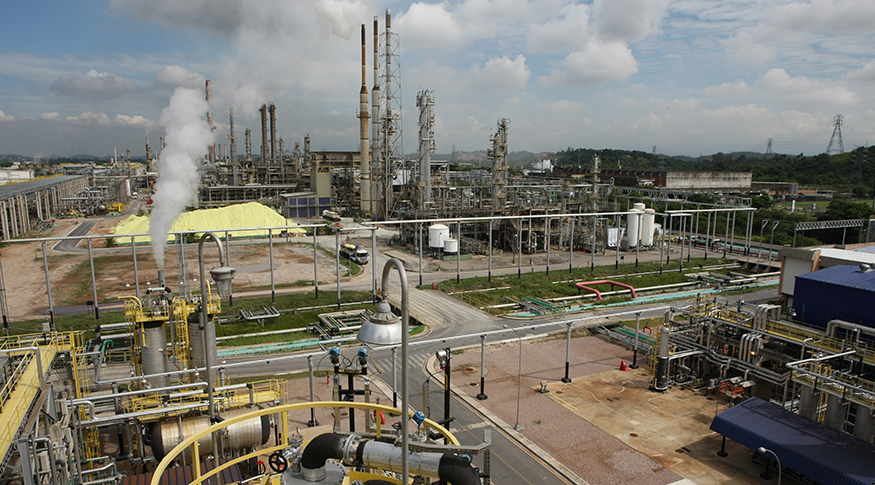IPP
Industrial prices grow 1.58% in July, sixth positive result in a row
August 29, 2024 09h00 AM | Last Updated: August 29, 2024 04h32 PM

Prices of the national industry accelerated to 1.58% in July compared with June, when it had grown 1.26%. It was the sixth consecutive positive result in this type of comparison. As a result, the Producer Price Index (IPP) accumulated rises of 4.18% in the year and of 6.63% in 12 months. In July last year, the change over the previous month had been -0.76%. The data were released today (29) by the IBGE.
"Besides recording the sixth consecutive positive change in the monthly index, industrial prices in July represented the highest rise since May 2022, when they had changed 1.81%. On the other hand, the result of 4.18% in the cumulative index in the year represented a different scenario from July last year, when it had accumulated a drop of 7.17%. The cumulative result in 12 months accelerated from 4.17/5 in June to 6.63% in July," highlights Murilo Alvim, an IPP analyst.
Among 24 industrial activities investigated by the survey, 21 reported positive price changes in July over the previous month. In June, however, 18 activities had shown higher average prices in this same indicator. The four most intense changes were in basic metals (4.47%), pulp and paper (3.79%), mining and quarrying industries (3.48%) and petroleum refining and biofuels (2.83%).
"In the July results, we perceived a rise spread along the entire industry, with 21 out of 24 sectors surveyed showing higher prices. All the sectors that stood out, either by change or by influence on the overall reuslt, rose in all the indicators analyzed by the survey," points out Alvim.
The highlight in the July´s result came from petroleum refining and biofuels, which exerted 0.29 percentage points (p.p.) of influence on the change of 1.58% of the overall industry. Other activities that also stood out were basic metals (0.28 p.p. of influence, food products (0.21 p.p.) and mining and quarrying industries (0.17 p.p.).
"The rise of 2.83% in the sector of petroleum refining and biofuels, the biggest influence this month, was mainly leveraged by the higher prices of gasoline, which followed the increase in the foreign prices of petroleum, and by the increase in alcohol, which counted with a higher demand in July," explains the analyst.
Alvim also highlighted the sector of basic metals, which changed 4.47%, mainly explained by the rises in non-metallic minerals - especially aluminum and gold, which follow the quotations in foreign stock markets - and in steel products, due to the rising quotation of iron ore.
"The rises of petroleum and iron ore in July managed to also influence the result of the mining sector, which stood out with an increase of 3.48%. As the quotation of these commodities is in dollar, the change noticed in the activities was also stepped up by the recent rises in the exchange rate. In July, the dollar appreciated 2.8% against the real, and accumulates a rise of 13.2% in the year and of 15.4% over the last 12 months," complements him.
The analyst also highlights the sector of food products, which changed, on average, 0.86% between June and July, the fourth positive change in a row. "This result was mainly pressed by the increases in orange juice and VHP sugar, exportable products still with a warm foreign demand. In contrast, cooled or fresh beef and long-life milk, with lower production costs and lower demand, had their prices retracted and negatively impacted on the sector reuslt," analyzes Alvim.
Among the broad economic categories, capital goods (BK) changed 1.28%, intermediate goods (BI), 1.93% and consumer goods (BC), 1.12%, being the change reported in durable consumer godds (BCD) of 0.20% and that in semi and non-durable consumer goods (BCND) of 1.30%.
Still in this indicator, the major influence was exerted by intermediate goods, whose weight in the composition of the overall index was 55.50% and accounted for 1.07 p.p. of the change of 1.58% of the mining and manufacturing industries. Consumer goods, with an influence of 0.41 p.p. and capital goods, with 0.10 p.p. complete the list. In the case of consumer goods, the influence noticed in July is split into 0.01 p.p. for durable consumer goods and 0.40 p.p. for semi-durable and non-durable consumer goods.
Know more about the IPP
The IPP aims at measuring the average change of sale prices received by the domestic producers of goods and services, as well as their evolution over time, signaling the short-term inflationary trends in Brazil. It is a key indicator for the macroeconomic follow up and, consequently, a valuable analytical instrument for decision makers, either public or private.
The survey investigates, in a few more than 2,100 enterprises, the prices received by producers, free from tax, tariffs and freight, defined according the most usual commercial practices. Nearly 6 thousand prices are collected monthly. The complete tables with the results are available at Sidra. The next release of the IPP, related to August, will be on September 26.



















